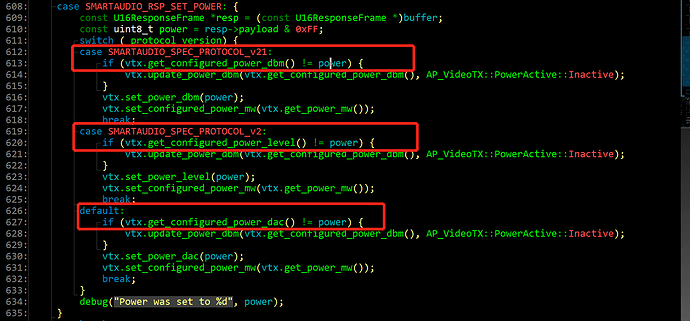Hi
I have read the docs Video Transmitter Support — Copter documentation , and did some proper setings. And it works with 0mW(pit mode), 100mW, 200mW, 400mW, but I can’t get 600mW working.
My VTX is 5804ML1.
And I pobably get the root cause. Can anyone let me know why this 600mW is commented.
I have asked about it, but I think it might be a long history, so there is no clear answer about it Discord





